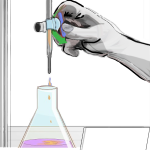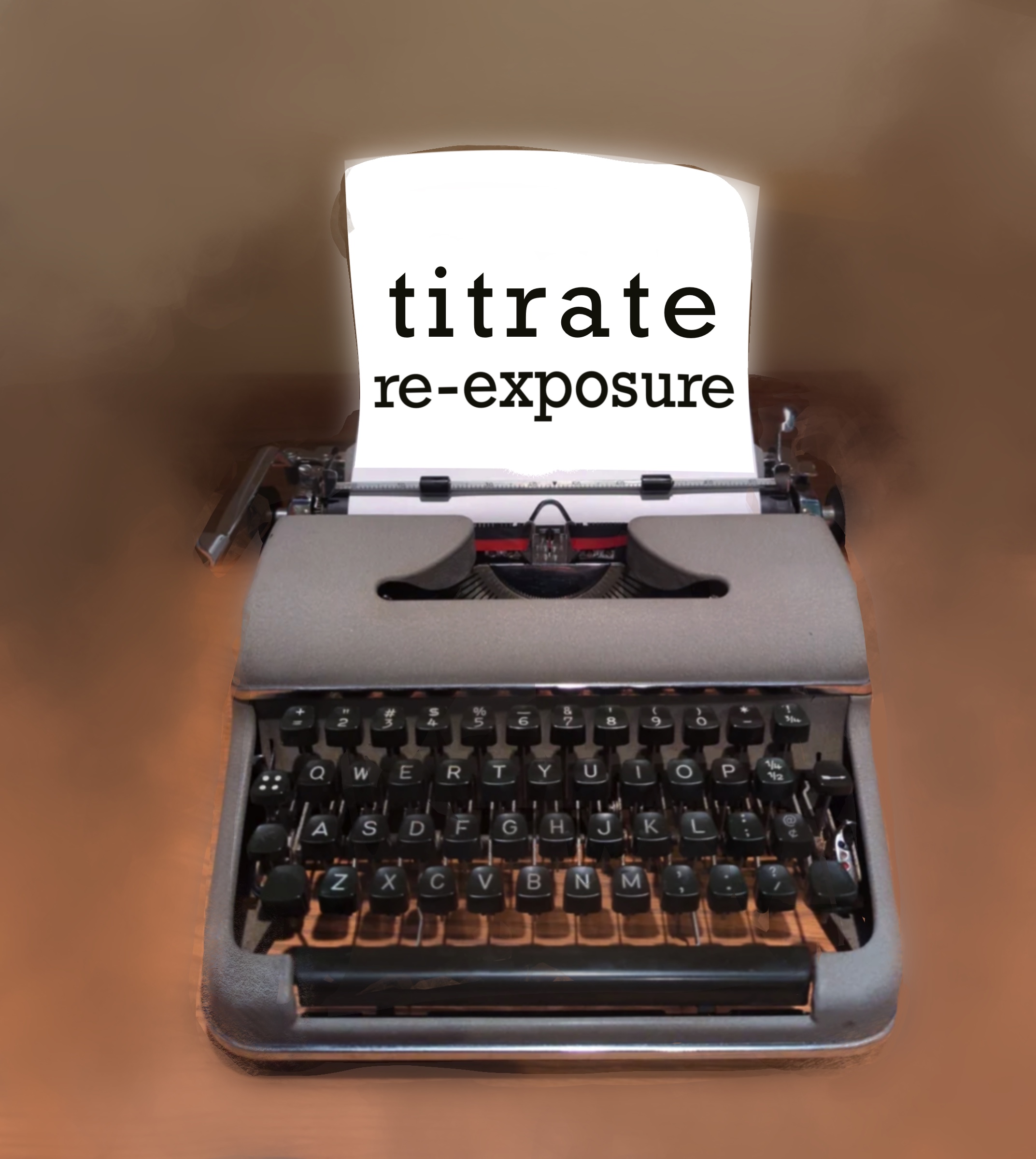When exposure and re-exposure to pain needs to be managed

The method known as titration is often employed by doctors and researchers to find the optimal dosage of a medicine. The method uses what is known as irrigation. You run a line of tubing that holds an antibiotic, for example, with another "line" of harmless saline. There is a clip that can be turned to open a larger volume of the medicine. This drip process allows the doctor or nurse to measure precise and small changes to the dosage. In simple terms, a nurse might choose to titrate a drug so the exposure to the medicine is safe and gradual.
— Discover Magazine, July 2023
Tornado by Heather McHugh.
(excerpt)
I can never
dream this storm away.
It was over for maybe minutes
then it was never over.
A FEW MORE THINGS TO WATCH FOR
Shock is the opposite of play. If you think of play as exploratory and full of animating choices to interact with the world, then you can define shock as the total opposite. Play expands and shock constricts.
Shock is having a startle reflex about anything that reminds you of an adverse situation.
It is a collapse of trust.
If we think of play as living in the here -and -now, the contrast would be to be frozen in time. Shock is described accurately in the poem. As McHugh writes, It (the tornado). “ was over for maybe minutes / then it was never over.”
The aftermath sensation is one of being stuck in a replay reel of the horrors you just witnessed.
Why is it on perpetual replay? The brain can not catch up fast enough to build a new pattern of reality. Life before is a phantom– you cling to it, but it is a vapor. The problem is that the future is just as elusive. You are suspended in psychological limbo. You have never been at this crossroad and you feel ill equipped to step in any direction.
Feeling grounded about how life will be after the trauma is impossible. Everything that once was solid ground is shifting sand underneath you.
The hours you are living through are full of dread and unexpected fragility. Minute by minute repetitive fears and intense emotions like grief, rage, and fear arrive unbidden during the phase of shock.
One of the most frequent stumbles friends and family make is to ask the person in shock a series of rapid fire questions. I would call this social stress.
Social stress is very difficult to manage on top of the fact that the physical core of your nervous system is melting down from a fire buried deep inside. People describe this feeling as being “out of body.” I believe some of that sensation is knowing that they are experiencing a melt down but they can’t locate within themselves the origin of the implosion. People describe this as their body, “having a mind of its own.”
Always keep in mind that the prefrontal cortex was off line during the event. It was 100% invested in actions of survival and only one thing… survival.
As a listener you should not move towards logic or expect verbal clarity.
This is the time to titrate.
You titrate information and keep executive function planning to a bare minimum when you see a person staring into space and not able to speak or formulate answers.
Think of it as drip. drip. drip. As one abrasive drip is given you let that short sentence settle. It blends and dilutes and then you sit with it. You never go full throttle with expectations or new information. You turn the tv off if it is recounting the tragedy.
A nurse would sense it literally but you can sense it intuitively. If a dosage of reality is so strong that it is causing tissue damage you go slower. Your movements are softer. You might find it helpful to announce every thing that is about to change. For example, in an very explicit way you might say, “We are allowed to stay in the lobby of the ER for as long as you need. I am going to stand up and walk across the room to get you some ice water. I will bring back a blanket and it might be nice if we both sat here for an hour.” Titrating might sound like asking a physician or police officer to break his or her news down into smaller bits. It also might be turning off a cell phone or putting an ‘away’ message on it because it is over stimulating. Often it is helpful to have one person take over as director of communications for the victim of a tragedy.
Many practitioners think of these actions as “parsing or separating.” Facts will be teased apart (parsing) and this allows them to be processed in a sequence. This sequencing regulates the nervous system.
NOTE: Taking the slow route also can keep a window open for reality checks regarding some of the beliefs that were attached to the story —these are probably errors. These beliefs often have ties to shame and guilt. You might hear self incrimination sentences that try to prove the linkage that they caused the painful event. They might say, “they should have died.” or “they should have rescued others.” Victims are drawn to every chance they can find to take total responsibility for having prevented the event. This feels good to them because it addresses their powerlessness. (see Broken Efficacy blog post)
1. Remember the traumatized person can’t assimilate new ideas or experiences very well. Novelty is overwhelming.
2. The victim of trauma also has impaired pain perception.
3. As you have read in my previous blog, Time is scrambled.
4. The victim is facing the collapse of their most basic assumption: they had previously seen themselves as invulnerable to tragedy. They also believed the world saw them as intrinsically worthy of a protected life story.
Symptoms (Day one through week One) following Trauma Exposure
- ● Reduced awareness of sensation
- ● Emotionally numb or flat
- ● Unable to think
- ● Dissociated
- ● Memory impairment
- ● Sleepy/unable to remain awake
- ● Spacey
- ● Fainting
- ● Unable to move
- ● Reduced physical movement
- ● Lethargic/no energy
- ● Disconnected
- ● Depressed
- ● Passive
- ● Ashamed
- ● Withdrawn
- ● Less verbal
- ● Nonresponsive
- ● Unable to actively defend yourself
- ● Feigned death
- The Fight or Flight Response
When you see the list of shut down symptoms it isn’t hard to see why you would not pepper a victim with a litany of questions.
The beauty of titration is that “less is more.” While you are listening you are going to slow down to a snail’s pace so that you are managing the rate of processing information in a way that matches the pace of and energy of the victim of trauma.
| not assigned | The Trauma Experience |
Related Posts
- 3 Trauma Stories & 3 Take-Aways
- Automatic Obedience and Other Reactions
- Defining the Word Trauma
- Distortions of Beliefs
- Efficacy
- Exile Trauma
- Overfunctioning can be a Side Effect of Skipping a Talking Day
- Part Two- Unattainable Memories
- Paucity (Speech Pattern)
- The True Self & Trauma
- Time is Scrambled/*not linear
- True Self Part #2
